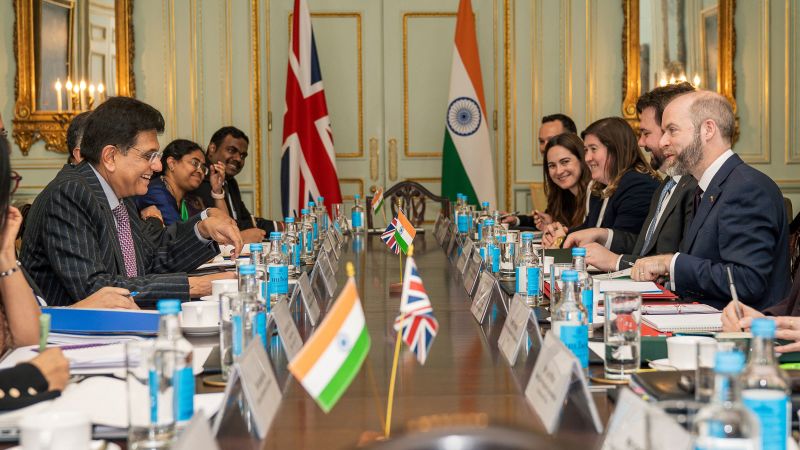In a significant development on the international trade front, India and the United Kingdom announced a “landmark” trade deal on Tuesday, as confirmed by the UK government’s official statement. This agreement is particularly notable given the context of rising import taxes under President Donald Trump’s administration in the United States, which has been instituting tariffs at historically high levels.
For several weeks prior to this announcement, President Trump had been indicating that a trade deal with one of the nations involved in ongoing negotiations with the U.S. was imminent. Among these nations, India was considered one of the strongest contenders to reach an agreement first. The potential for any major trade deal has generally been met with a sense of optimism in the U.S. financial markets, creating hopes that the adverse effects of America’s tariff strategies might be mitigated. However, no concrete deals had materialized until the UK-India agreement came to fruition.
This new agreement, rather than being with the United States, is a significant achievement for Britain. The UK Department for Business and Trade characterized the deal as “the biggest and most economically significant bilateral trade deal the UK has done since leaving the EU.” The implications of this agreement are expected to be substantial, with projections suggesting that bilateral trade between the two nations could increase by £25.5 billion (approximately $34.1 billion) per year in the long term. This figure indicates a remarkable 60% rise from the anticipated trade levels in 2024, according to data released by the British government.
As part of the trade agreement, India has committed to reducing tariffs on a variety of UK exports, which include whisky, medical devices, advanced machinery, and lamb. Notably, these reductions in tariffs will be phased out completely within a decade. In a reciprocal arrangement, the UK has also signaled that it will lower tariffs on Indian imports, although detailed information regarding specific reductions has not been disclosed publicly.
This trade deal is expected to have tangible benefits for British consumers. According to the release from the UK Department for Business and Trade, shoppers can look forward to seeing more choices and potentially lower prices on products such as clothing, footwear, and food items, which include frozen prawns. This move illustrates the broader strategy of the UK to liberalize its tariff regime, which may be especially appealing in a post-Brexit context.
While the UK has progressed in forging partnerships, the Trump administration remains focused on establishing trade agreements with various nations, including India, Japan, and South Korea. However, as the weeks progress, there appears to be little advancement towards a concrete deal being finalized with these countries. The economic uncertainties posed by the looming US tariffs, which are set to take effect on July 8 and could impose levies as high as 50% on various nations, present a growing concern. Failure to reach trade agreements could significantly impact the economy, potentially precipitating a recession both in the U.S. and globally.
This latest agreement with India is not Britain’s first foray into significant trade deals with Asian countries following its exit from the European Union in 2020. Notably, the UK had previously established a trade agreement with Japan, which was expected to enhance trade flows by around £15.2 billion ($20.3 billion). In light of these developments, UK Prime Minister Keir Starmer expressed optimism about the future of trade, highlighting the importance of strengthening alliances and reducing trade barriers globally.
Experts like Emma Rowland, policy adviser for trade at the UK’s Institute of Directors, echoed the sentiment that the UK-India trade agreement signifies a positive development, celebrating new partnerships that encourage free trade, particularly in light of the disruptions caused by recent trade tensions and the US tariff policies.
In conclusion, the UK-India trade agreement represents a pivotal moment for the economic relationship between the two nations while simultaneously underscoring the challenges the US faces in its ongoing trade negotiations. The implications for consumers, businesses, and international trade dynamics are considerable, setting the stage for a new era of economic collaboration.



